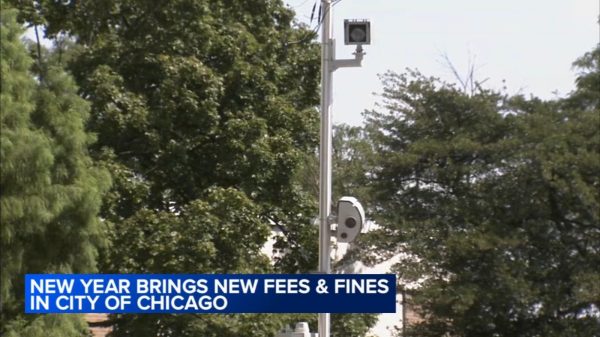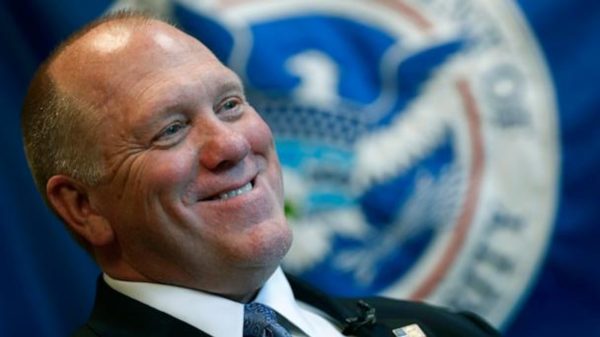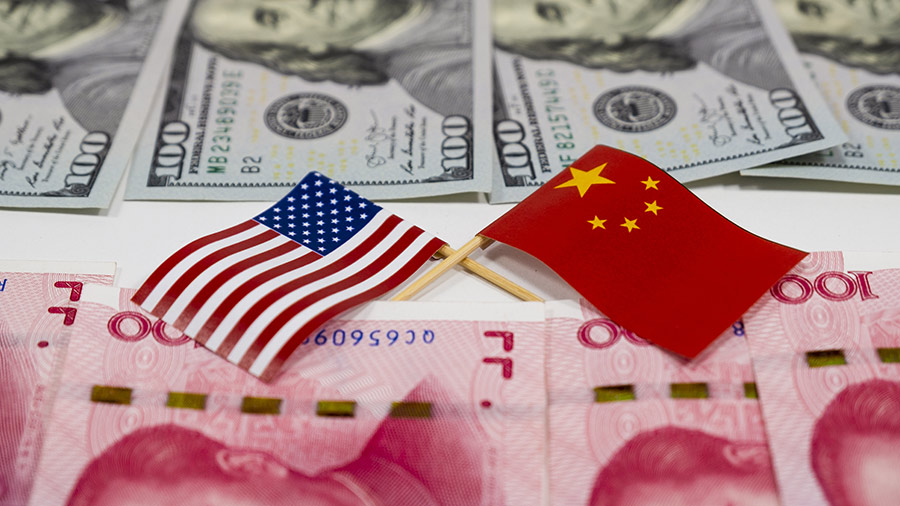U.S.-China trade has increased rapidly in recent decades and is vital to both nations. China is a major export market for U.S. goods and services, while the US is a major export market for China. The US has benefited from lower consumer prices and larger corporate profits, but this trade has come with drawbacks.

US-China trade relation. How it affect the global trading. (Source: Savills)
Global Trade Integration
U.S. consumers profited from cheaper Chinese goods, but import competition cost millions of jobs. China has long been accused by the US of stealing or pushing American companies to hand over their technology. As Beijing embraced state-led development and subsidized particular industries, U.S. and international corporations lost hope after China joined the WTO 20 years ago. Chinese investment raises national security worries. As U.S. President Joe Biden becomes more confrontational, the economic relationship is shaky.
Washington severed connections with Beijing’s communist regime in 1949, resulting in almost no trade between the two countries for thirty years. After normalizing relations in 1979, US-China trade exploded from a few billion dollars to hundreds of billions over the next four decades. Under Deng Xiaoping, China began decades of economic reform in the late 1970s. His government deregulated the economy and encouraged private enterprise. China applied to rejoin the WTO’s predecessor, the General Agreement on Tariffs and Trade, in 1986 to boost trade and investment. China joined the WTO in December 2001 after lengthy negotiations with the US and other WTO members. Beijing agreed to deep economic reforms, including steep tariff cuts for imported goods, IP protections, and law and regulation transparency, as a condition of admission.
President Bill Clinton and his advisors believed that integrating China into the global trading system would benefit the US and promote economic and democratic reform in China. However, U.S. labor unions and many congressional Democrats opposed the move, arguing that China’s weak worker and environmental protections would encourage a “race to the bottom.”
China’s WTO trade grew before accession. However, WTO membership assured “permanent normal trade relations,” giving U.S. and international companies the confidence to create in China and export to the U.S. Trade increased: U.S. imports from China soared from $100 billion in 2001 to $500 billion in 2022. China’s role in global supply chains allows Chinese firms to build items for US export using components from around the world, contributing to this increase in imports.
Benefits of the Trade
Consumers have benefited from decreased pricing, while U.S. corporations have gained greatly from China’s market. Xavier Jaravel and Erick Sager reported in 2019 that greater trade with China enhanced the typical U.S. household’s purchasing power by $1,500 between 2000 and 2007. China is the US’s third-largest export market after Canada and Mexico. The U.S.-China Business Council, an industry association, determined that exports to China supported over one million U.S. jobs in 2022.
From China sales, American corporations can invest hundreds of billions in their U.S. operations. In recent years, U.S. government surveillance has reduced Chinese investment in the US, which has totaled tens of billions. China has benefited greatly from trade with the US and the world. China’s GDP has grown more than five-fold, adjusted for inflation, since 2001, becoming the world’s second-largest after the US. (Some say it’s the biggest.) This growth has lifted hundreds of millions out of abject poverty.
The trading connection has benefited the US and other nations, but it has also caused many issues. Making job losses. According to economists David Autor, David Dorn, and Gordon Hanson, the China Shock—the costs of increasing trade with China—were greater than those of increasing trade with other countries like Japan. Due to the rapid rise in imports, China’s large low-wage workforce, and the variety of affected industries. The places most hurt by competition with China also saw growing political polarization, which some observers argue helped Donald Trump and populist political movements ascend. According to CFR senior scholar Edward Alden and other experts, the US lacks effective economic disruption measures.
Nationwide security. U.S. leaders are increasingly concerned about China acquiring key U.S. technology for industrial policy and military purposes. U.S. authorities have regularly accused Beijing of stealing IP and forcing American companies to transfer their technologies to China. Washington worries that U.S. corporations using Chinese technology could compromise national security due to spying.
Subsidization and state-owned enterprises. The Chinese government has subsidized many industries to create “national champion” companies to achieve its economic goals. Some experts argue that these subsidies are wasteful, but they can be disruptive to other countries whose companies cannot compete against such levels of state support. The US claims that many Chinese state-owned firms are government arms that do not follow market forces like their private competitors.
Currency manipulation. Many economists believe China maintained the yuan low for a decade after joining the WTO by collecting U.S. dollar reserves. A weakening currency makes Chinese imports cheaper and U.S. exports more expensive, increasing the trade deficit with China. Labor and human rights abuses. U.S. labor groups have long criticized China’s working conditions and human rights record. Recent reports of forced labor in Xinjiang, where China is persecuting millions of Uyghurs, have resurrected these trade worries.
Negotiations, WTO disputes, investment inspection, tariffs, and industrial strategy have been used by the US to address trade concerns with China. Over the past decade, U.S. policymakers have become more forceful, escalating the conflict. U.S. negotiators wanted a temporary safeguard to curb Chinese imports as part of China’s WTO membership, although it was seldom used before expiring twelve years later. The Bush administration fretted about cascading calls from U.S. firms for more protection and required Beijing’s assistance for other foreign policy goals, including the worldwide war on terrorism, Blustein argues. The Bush administration placed taxes on subsidized or “dumped” Chinese imports. It also had high-level trade talks with China.
These discussions continued during President Barack Obama’s administration, which imposed sanctions on Beijing. Obama used special protection to levy taxes on imported tires, and his administration prevailed in several WTO fights with China. On the suggestion of the Committee on Foreign Investment in the United States (CFIUS), an interagency group that assesses investments on national security grounds, Obama took the unusual step of banning two Chinese purchases. His administration also completed Trans-Pacific Partnership (TPP) negotiations, a mega-regional trade agreement marketed as a tool to tackle China’s trade.
Trump chose an even more muscular approach, leaving the TPP and putting tariffs on hundreds of billions of dollars in Chinese imports. Many analysts have condemned the “Phase One” agreement between the two countries as a dodge on basic U.S. issues in exchange for China’s promise to buy $200 billion more U.S. goods, which it failed to do. Trump also labeled China a currency manipulator for the first time in decades and extended the Obama administration’s ban on WTO Appellate Body appointments, crippling the dispute settlement system. The U.S. Congress expanded CFIUS and tightened high-tech export prohibitions in response to concerns about Chinese technology acquisition.
Washington has taken its biggest steps to weaken China’s economic dominance under Biden. Biden has retained $360 billion in tariffs imposed under Trump, sanctioned Chinese individuals involved in human rights abuses in Xinjiang and Hong Kong, introduced unprecedented export controls that limit Beijing’s ability to obtain advanced technology, and banned some U.S. investment in sensitive technologies lawmakers fear could aid China’s growing military. Several U.S. governors have signed laws banning public pensions from investing in Chinese state-controlled stocks. Some academics dispute whether the WTO can resolve U.S. complaints and whether China’s economic model is incompatible with global trading standards. Subsidies assume a clear border between state and private enterprise, which is blurring in China. According to a recent USTR assessment, it is “widely accepted in the United States that WTO rules do not, and cannot, effectively discipline many of China’s most harmful policies and practices.” According to the report, the USTR proposes reforms to trade law to combat these activities.
CFR’s Hillman argues that admitting China to join the WTO was not a mistake, but that the US erred by not using its tools to prevent China’s unfair trade practices sooner. Hillman believes Washington may need to go elsewhere, even though the WTO is still useful. Some analysts propose a WTO-complementary compact of like-minded nations. Some politicians, like Senator Josh Hawley (R-MO), want to dismantle the WTO.
Singapore Management University professor Henry Gao, an expert on Chinese law and international trade, says unilateral tariffs harm the US’s image as a free trade champion and give China moral power. Hillman and Gao agree that U.S. officials shouldn’t have assumed WTO membership would transform China. “Was the WTO even designed to convert countries’ economic systems?” Gao says. My response is no,” Gao believes China’s model is unsustainable and advises the US to be patient and negotiate new norms inside the WTO.
READ ALSO: Chinese Communist Party (CCP) is Actively Targeting South China Sea, According to Rep. Young

















































